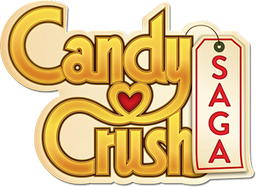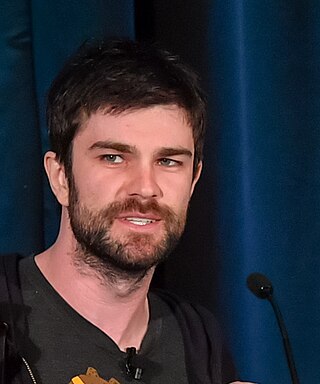
The history of video games began in the 1950s and 1960s as computer scientists began designing simple games and simulations on minicomputers and mainframes. Spacewar! was developed by Massachusetts Institute of Technology (MIT) student hobbyists in 1962 as one of the first such games on a video display. The first consumer video game hardware was released in the early 1970s. The first home video game console was the Magnavox Odyssey, and the first arcade video games were Computer Space and Pong. After its home console conversions, numerous companies sprang up to capture Pong's success in both the arcade and the home by cloning the game, causing a series of boom and bust cycles due to oversaturation and lack of innovation.

Epic Games, Inc. is an American video game and software developer and publisher based in Cary, North Carolina. The company was founded by Tim Sweeney as Potomac Computer Systems in 1991, originally located in his parents' house in Potomac, Maryland. Following its first commercial video game release, ZZT (1991), the company became Epic MegaGames, Inc. in early 1992 and brought on Mark Rein, who has been its vice president since. After moving the headquarters to Cary in 1999, the studio changed its name to Epic Games.

Plague Inc. is a real-time strategy simulation video game, developed and published by UK-based independent video game studio Ndemic Creations. The game was inspired by the 2011 film Contagion and the 2008 Adobe Flash game Pandemic 2. The player creates and evolves a pathogen to annihilate the human population with a deadly pandemic. The game uses an epidemic model with a complex and realistic set of variables to simulate the spread and severity of the plague. It was released on 26 May 2012 for iOS, 4 October 2012 for Android and 13 May 2015 for Windows Phone.

Candy Crush Saga is a free-to-play tile-matching video game released by King on April 12, 2012, originally for Facebook; other versions for iOS, Android, Windows Phone, and Windows 10 followed. It is a variation of their browser game Candy Crush.

The Room is a puzzle video game developed by Fireproof Games. The game was originally developed for the iOS platform and released in 12 September 2012. The Android version debuted as part of a Humble Bundle in March 2013 and was subsequently released on Google Play. A free expansion for the title was released in August 2013. An enhanced version of the game was released for Microsoft Windows in July 2014, and for the Nintendo Switch in October 2018.

A microconsole is a home video game console that is typically powered by low-cost computing hardware, making the console lower-priced compared to other home consoles on the market. The majority of microconsoles, with a few exceptions such as the PlayStation TV and OnLive Game System, are Android-based digital media players that are bundled with gamepads and marketed as gaming devices. Such microconsoles can be connected to the television to play video games downloaded from an application store such as Google Play.

Simogo is a Swedish independent video game developer based in Malmö. The company was founded in 2010 and is best known for creating games for mobile devices, including Year Walk and Device 6. Its name comes from the name of its founders Simon (SIM), and Gordon (GO); the 'O' from the Swedish word "och" meaning "and".
Ustwo Fampany Limited is a London-based software development studio focused on digital design, such as clean and elegant user interfaces. Founded in 2004, the company had initially served clients in supporting their mobile apps, and developed mobile games, but gained significant attention upon release of Monument Valley in 2014, which won numerous awards and had over two million units sold. Alongside their Ustwo Games division, the company continues to produce other software for a range of computing devices through Ustwo Studios, as well as investing in new firms through Ustwo Adventure, and helping to mentor young talent within Ustwo Foundation.

Threes is a puzzle video game by Sirvo, an independent development team consisting of game designer Asher Vollmer, illustrator Greg Wohlwend, and composer Jimmy Hinson. The game was released on February 6, 2014, for iOS devices and later ported to Android, Xbox One, Windows Phone, and Windows. In Threes, the player slides numbered tiles on a grid to combine addends and multiples of three. The game ends when there are no moves left on the grid and the tiles are counted for a final score.

Greg Wohlwend is an American independent video game developer and artist whose games include Threes! and Ridiculous Fishing. He originally formed Intuition Games with Iowa State University classmate Mike Boxleiter in 2007 where they worked on Dinowaurs and other small Adobe Flash games. Trained as an artist, Wohlwend worked mainly on the visual assets. As Mikengreg, they released Solipskier, whose success let the two take a more experimental approach with Gasketball, which did not fare as well. At the same time, Wohlwend collaborated with Asher Vollmer to make Puzzlejuice, and with Adam Saltsman to make Hundreds based on Wohlwend's first game design. He later released Threes! with Vollmer in 2014 to critical acclaim. His later games TouchTone and TumbleSeed were also the products of collaborations. Wohlwend was named among Forbes' 2014 "30 under 30" in the games industry.

Hundreds is a puzzle video game where players touch circles to make them grow without overlapping. In the game's 100 levels, the player interacts with different types of circles to bring a counter to the number 100. The game was developed and published by Semi Secret Software in collaboration with Greg Wohlwend and was released for iOS on January 7, 2013, and on Android later that year.

Asher Vollmer is an American indie video game developer. He created Puzzlejuice and Threes. Vollmer also worked on Guildlings and Beast Breaker.

Blek is a 2013 puzzle video game for iOS and Android by Kunabi Brother, a team of brothers Denis and Davor Mikan. The player draws a snakelike black line that recurs in pattern and velocity across the screen to remove colored dots and avoid black dots. It is minimalist in design, features excerpts of Erin Gee, and takes inspiration from Golan Levin, the Bauhaus, and Japanese calligraphy. The brothers designed the game as a touchscreen adaptation of the Snake concept and worked on the game for over six months. It was released in December 2013 for iPad, and was later released for other iOS devices and Android.

Hitman Go is a turn-based puzzle video game developed by Square Enix Montréal and published by Square Enix's European subsidiary. Announced in February 2014, the game was released for iOS in April 2014 and for Android in June 2014. Windows and Windows Phone versions were released the following year in April 2015. In February 2016, a "Definitive Edition" version was released on PlayStation 4, PlayStation Vita, and on Linux and Windows via Steam. It is the first game developed by Square Enix Montréal, a studio founded in 2011. Development entered full production in 2013 and was completed by eleven people using the Unity game engine.

Windosill is a 2009 puzzle video game by Vectorpark for Microsoft Windows, OS X, Linux, web browsers, and iOS. The player advances through eleven different rooms by interacting with each level's environmental objects. It was developed by Patrick Smith, an artist who taught himself to animate and program the game in Adobe Flash. He was inspired by a variety of painters and artists. The game was first released for Windows, OS X, and web browsers in 2009, and was later ported to the iPad in 2011, with several added features.

Donut County is a puzzle video game developed by American designer Ben Esposito and published by Annapurna Interactive in 2018. The player moves a hole to swallow objects, which makes the hole increase in size. The concept originated in a game jam based on pitches from a Twitter account parody of game designer Peter Molyneux, and later added a mechanic similar to that of Katamari Damacy. Other inspirations for the game included Hopi figurines—a theme Esposito later relinquished—and locations from Bruce Springsteen songs. Donut County was released in August 2018 for iOS, macOS, PlayStation 4, and Microsoft Windows platforms while versions for Xbox One and Nintendo Switch were released in December 2018. It also released for Android in December 2020.

Zach Gage is an independent video game programmer and designer based in New York City. He is known for his iOS games, including SpellTower.

Monument Valley 2 is an indie puzzle game developed and published by Ustwo Games. It is the sequel to the 2014 game Monument Valley. It was released for iOS in June 2017, and released for Android in November 2017. A new chapter called The Lost Forest was freely added in October 2021. Monument Valley 2+, an Apple Arcade exclusive, was released on March 11, 2022. The PC version of the game, Monument Valley 2: Panoramic Edition, released on Steam in July 2022.

The popularisation of mobile games began as early as 1997 with the introduction of Snake preloaded on Nokia feature phones, demonstrating the practicality of games on these devices. Several mobile device manufacturers included preloaded games in the wake of Snake's success. In 1999, the introduction of the i-mode service in Japan allowed a wide variety of more advanced mobile games to be downloaded onto smartphones, though the service was largely limited to Japan. By the early 2000s, the technical specifications of Western handsets had also matured to the point where downloadable applications could be supported, but mainstream adoption continued to be hampered by market fragmentation between different devices, operating environments, and distributors.
Tilting Point is a free-to-play (F2P) games publisher founded in 2012. In the years since, Tilting Point has grown to include over 200 staff members and office locations in New York, Boston, Barcelona, Kyiv, Seoul, and San Diego. Further partnerships with development studios and publishers exist in over a dozen countries.














